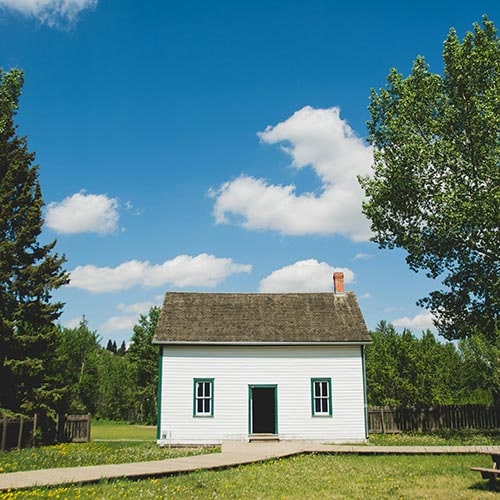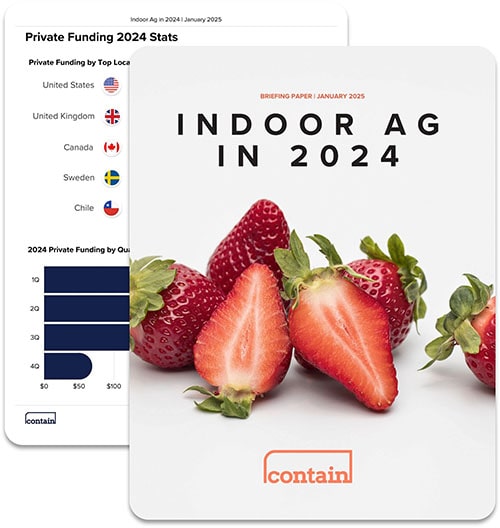August 13, 2024

For many Americans, owning a home reflects a key life goal. A 2022 study found that 74% of Americans view ownership as the highest gauge of prosperity, coming before having a career, children, or a college education (NY Times). However, facing the modern housing affordability crisis, it becomes harder and harder for young Americans to make this dream a reality.
The Dual-Front Housing Crisis
The housing crisis is currently a dual-front battle. The first challenge is a shortage of houses. Studies indicate the current shortage lies somewhere between 4 and 7 million houses (NPR). However, even if ample housing exists, there is no guarantee that it is affordable. The second pressure point for current renters and buyers is the affordability of units. In 2022, more than 50% of all renters qualified as cost-burdened renters as they spent more than 30% of their income on housing—more than any other time in history (NY Times).
Furthermore, this crisis is only deepening. The increase in housing prices has consistently outpaced the increase in income over the past decade. While the median income has increased by 11%, the median house price has increased by 30% (CNBC). Rising interest rates have also contributed to the stagnation in the housing market. As the Fed raised interest rates, mortgages became increasingly unaffordable, driving new buyers out of the market. Additionally, those who had already locked in sub-3% mortgage rates had no incentive to sell, as they couldn’t afford the next house at 7-8%. While housing stock has grown in recent years, much of the new additions are not affordable, especially for new and younger buyers. Ross Bunton, a 26-year-old living in St. Louis, feels completely priced out of the market: “I don’t think that buying a house is super realistic for me, even within the next couple of years” (CNN).
The Need for Innovation in Affordable Housing
In the context of the worsening housing crisis, it’s clear innovations in the affordable housing market are necessary. Particularly for young people interested who are increasingly moving to save costs (see our blog on rural migration), a market for inventive housing options is opening up. One potential solution comes packaged and delivered from a factory in the form of modular housing. Modular housing refers to houses that are built off-site, generally in pre-designed units with basic customizations, then delivered for assembly to the intended site. While modular housing has been popularized internationally (in Sweden, 45% of homes are built offsite and in Japan 15-20% are modular (CNBC)), it is still a very nascent industry in U.S. markets. Less than 4% of current U.S. housing is modular housing according to a 2023 McKinsey & Company report.
Benefits of Modular Homes
While quite untraditional in their manufacturing process, modular homes offer advantages that make them desirable for both manufacturer and buyer.
Affordability
Due to their unique manufacturing process, modular housing bypasses many of the challenging hard costs faced in the traditional housing market, allowing them to present a more affordable option. Hard costs (including building materials, land acquisition, and labor costs) account for 65-73% of development costs (Brookings). Several market factors have exacerbated these costs. For instance, the construction industry is currently facing increasing labor costs due to labor shortages; 342,000 additional workers above the normal hiring pace would be required to meet demand in 2024 (Associated Builders and Contractors).
Through an assembly-line manufacturing process with consistent material usage, the costs for acquiring materials and labor is minimized. Lower costs of production are passed onto the consumer. Modular housing typically costs 20% less than their traditional house counterparts (McKinsey and Company).
Speed
The simple manufacturing to delivery process for modular housing allows a significantly expedited time frame for housing construction. Rather than waiting years for a house, modular houses are generally functional in under a year. According to a Modular Building Institute white paper, the average multi-family home took 20 months from approval to occupancy. A comparable modular housing unit took only 8 months. This shorter timeframe has many benefits. The house comes faster. There are fewer losses from leaving land unused during the construction process. Shorter construction time is often associated with lower construction costs.
Sustainability
As a result of both the construction process and simplified building materials, modular housing can be uniquely sustainable. Modular housing tends to use less carbon intensive materials and save on indirect emissions through consistent assembly-build build systems. As a result, scholars from University of Cambridge reported that modular housing development can decrease embodied carbon emissions by 45%.
Additionally, since most of the construction process occurs off-site, less trips are required to carry materials to the build site, reducing transportation emissions and costs. A Make UK Modular study from 2022 found that 80% fewer vehicle movements were required for modular housing versus a comparable traditional house.
Design & Aesthetics
Another benefit of modular housing is the customizable design and sleek aesthetic. Since the construction is fully planned beforehand, utilizing and customizing from base designs, the aesthetics of the house are tailored exactly to the needs of the consumer. Many modular housing firms specialize in a variety of aesthetic styles from polished modern rooms to traditional country homes. The quality of the resulting home is also assured as the factory production allows for heightened quality control.
Challenges in the Modular Homes Market
Despite the plethora of potential benefits, the modular housing market does face some significant constraints.
Upfront Costs
One major challenge is that modular housing companies require developed infrastructure before they are operational. They require sufficient investment to build out a factory and projects in the pipeline before they can truly begin operating. This market risk makes investors tentative and business difficult for modular housing companies trying to enter new markets. Jonatan Pinkse notes that these factors, along with rising energy costs and a decreasing willingness to commit to home-buying has made the modular housing market difficult (CNBC).
Building Codes for Modular Homes
Another challenge facing modular housing is the prevalence of harsh zoning restrictions limiting where they can be constructed. There is often a local stigma surrounding manufactured housing. Prefab houses are sometimes considered cheap and quality-degrading to the surrounding areas. In North Carolina, for example, many local governments have implemented harsh zoning restrictions that minimize the ability for prefab houses to be built (UNC). While state and national governments have started to create stricter guidelines that prevent unnecessary regulation of prefab and modular homes, this continues to be a challenge for developers.
Examples of Modular Housing Companies
The current modular housing market has many promising up-and-coming firms. Several of the market’s interesting names along with pictures of their builds are shown below. Each image is courtesy of the linked firm.
Dvele
Method Homes
Baufritz
Other players in the modular housing market include Champion, Lendlease Corporation, Redman Homes, Koma Modular, Mighty Buildings, Clayton Homes, Vika Living, Plant Prefab, Volumetric Building Companies, and Muncy Homes, among several others.
Conclusion
While modular housing developers do face barriers to getting off the ground, they hold potential to combat the housing crisis. Particularly in rural areas where a growing population is struggling to find housing without disrupting the established townships, modular housing’s efficient and customizable construction process could be the solution the U.S. housing market is looking for.
Cover image courtesy of Unsplash

Indoor Agriculture Pivots to Home Gardens as Vertical Farming Failures Drive Strategic Reevaluation

Zordi Series B and May 2025 Indoor Agriculture Developments

Freight Farms Bankruptcy and iUNU’s $20M Raise Highlight April’s Indoor Ag Contrasts

Freight Farms Resources: Indoor Ag Companies Stepping Up to Support Freight Farmers

How to Finance Your Hydroponic Project in 2025: Finding Opportunity in a Shifting Market

Indoor Ag’s New Reality: Practical Advice from Investment Banker Adam Bergman

Plenty Unlimited bankruptcy dominates March’s indoor ag news, overshadowing new farm plans

80 Acres Farms secures $115m, Square Roots expands to Japan, and indoor ag sees farm shakeups in February

Robobees take flight, vanilla goes vertical, and a new IPO is on the horizon in indoor agriculture’s January

Canadian Agriculture Grants: 7 Funding Opportunities for Indoor Farming in 2025

Indoor Ag Outlook: Funding Trends and 2025 Projections
